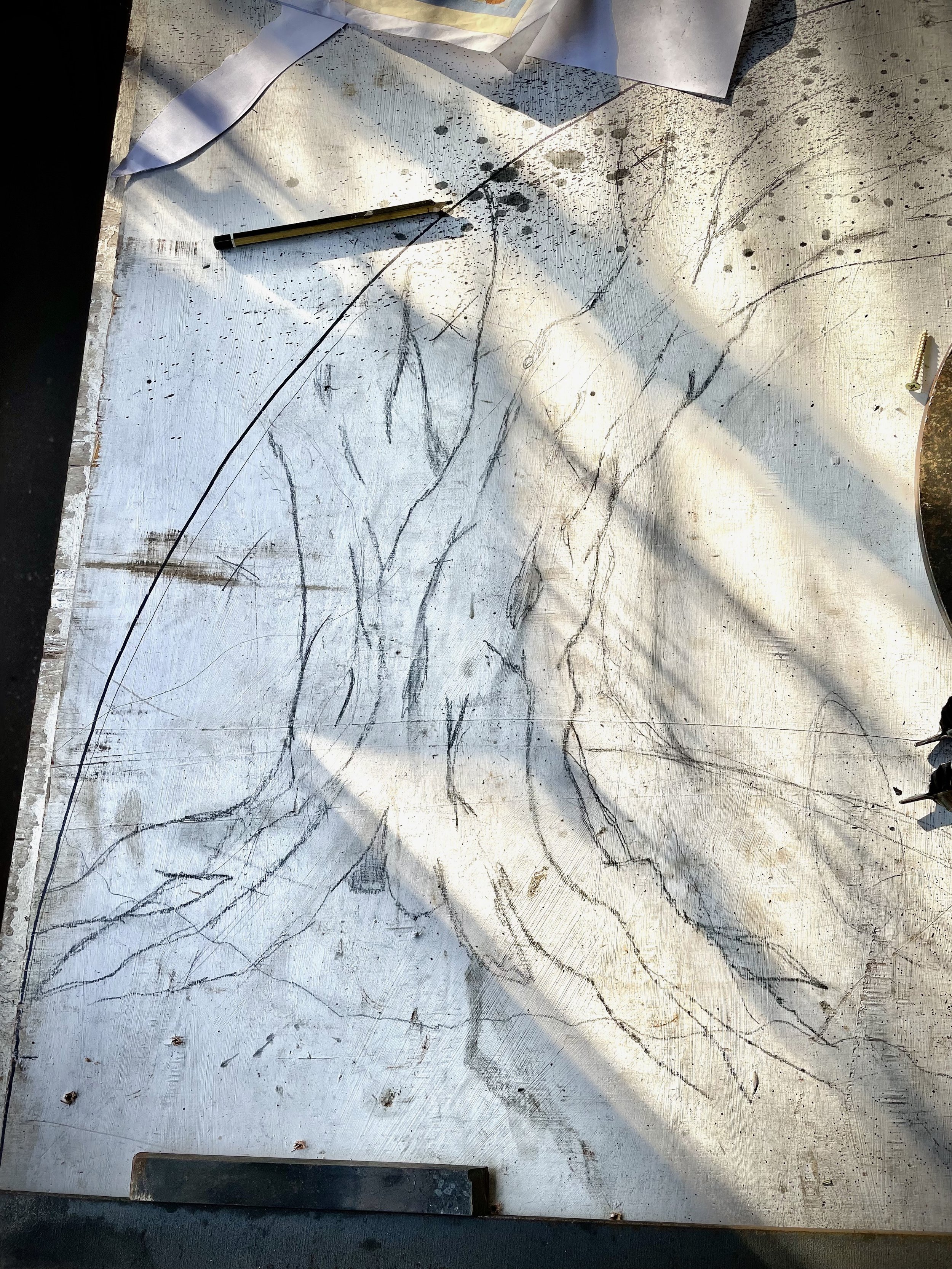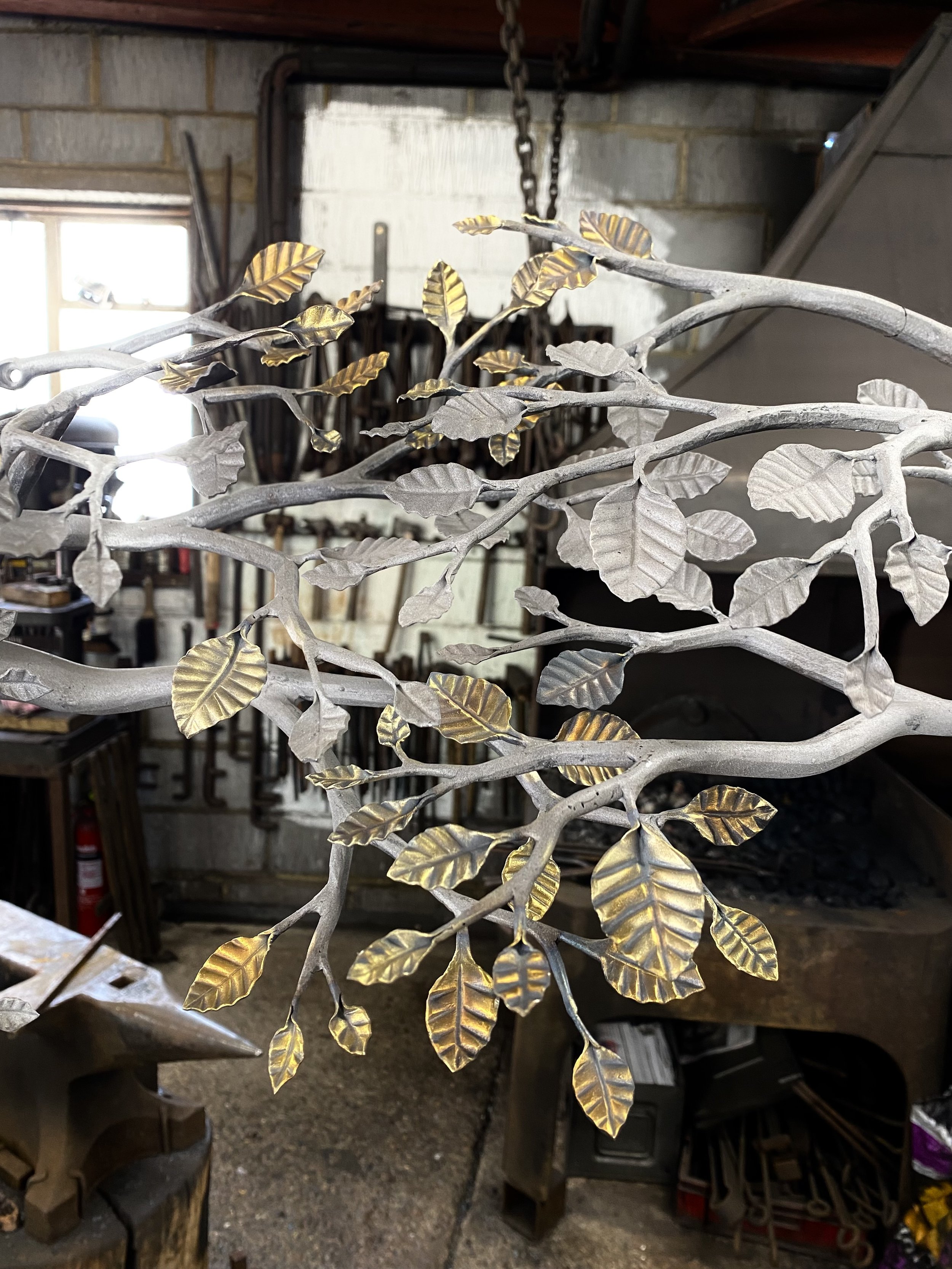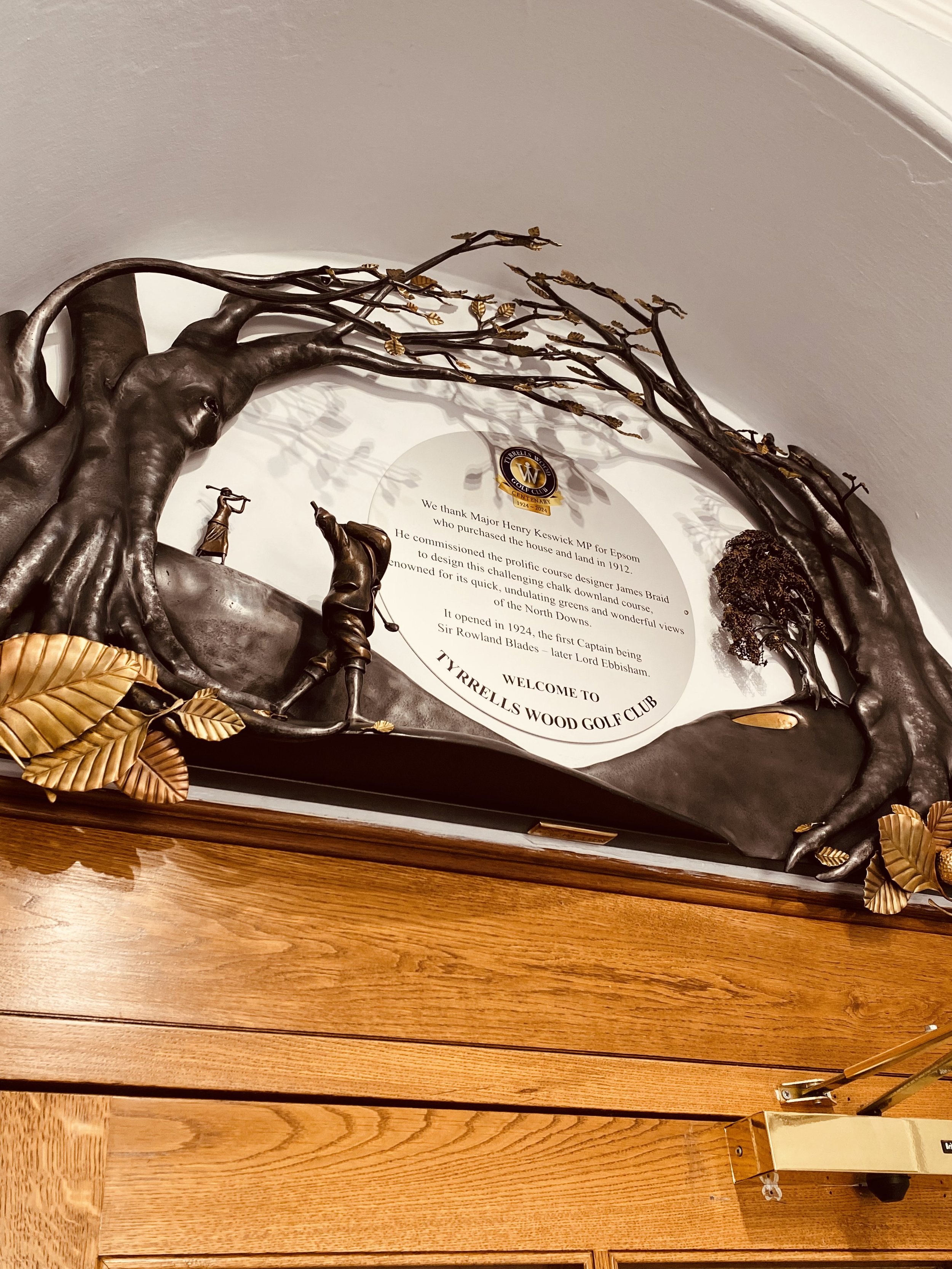Made by Tom Quinnell
Designed by Lucy Quinnell
It was a great privilege to be asked to design and make a special piece of ironwork to frame a plaque celebrating this famous golf club’s centenary.
The beautiful historic clubhouse building sits high up looking over surely one of the most spectacular landscapes in the country. Major Henry Keswick MP for Epsom purchased the house and land in 1912. He commissioned the prolific course designer James Braid to design the challenging chalk downland golf course, renowned for its quick, undulating greens and wonderful views of the North Downs. It opened in 1924, the first Captain being Sir Rowland Blades – later Lord Ebbisham.
The location chosen for something to celebrate a century since the opening of Tyrrells Wood was an attractive and conveniently empty arched recess above the inner main entrance door.
Lucy Quinnell spent time researching the site’s history and visiting it to get inspiration from the building and the surrounding land. The stunning chalk hills result in distinctive flora, and in all seasons the majestic beech trees of this part of Surrey delight locals and visitors alike. Lucy knows this part of Leatherhead very well, and has always enjoyed its splendour, its ecology and its rich history. The Roman road Stane Street runs parallel to the first and second holes, and Lucy participated in a dig with Surrey Archaeological Society here as a child. J. M. W. Turner painted the beech trees of Mole Valley, and Jane Austen undoubtedly knew these hills and valleys when she stayed close by and wrote about Emma Woodhouse and Harriet Smith walking out from the fictitious Highbury (based on Leatherhead). The Tyrrells Wood Golf Club members and staff are clearly very proud of their setting, and Lucy soon realised that the beech trees and rolling hills strongly characterize Tyrrells Wood. She admired the incredible detail of the clubhouse, and felt from the outset that whatever was produced should be something of similarly fine detail and quality to do justice to the gorgeous historic elements.
She produced pen and ink drawings of several possible directions that the ironwork could take, and the Club agreed with her favourite proposal of two mature beech trees forming almost a ‘holloway’ around a circular plaque, with warm-toned vibrant beech leaves and polished solid bronze golf balls.
The Club requested that two 1924 golfers were added to the design, and this meant adding ‘ground’ for the golfers to stand on, so hills were built in, with a bunker and smaller beech tree to make sense of the new figurative additions.
Tyrrells Wood Golf Club has modernised in recent decades to ensure the full inclusion of female golfers, so it was important to recognise women within the design. Women were of course playing golf in 1924 but not at Tyrrells Wood as equals alongside the men in that era, so after looking at many different arrangements it was decided that the female golfer in the iron picture should be playing just as actively as the male figure in the design, but on a different hill in the metal landscape, showing that women did play golf and in time would come equally to the forefront of golfing life at Tyrrellls Wood.
Tom took Lucy’s design and the additions agreed with the Club, and approached the project with a painterly perspective of creating the metal elements free-hand and using his artistic eye as he went. This always leads to the best outcome but depends on very trusting clients, and Tom and Lucy couldn’t have asked for better clients than the team representing Tyrrells Wood. Richard Skeet visited regularly, and brought other key people with him. This is a lovely way of working, and enables decisions to be made with some flexibility if something looks better or not as successful as first planned. This kind of creative ironwork is just like painting a painting, and not every shape or texture or finish can be wholly predicted in terms of its ‘look’ until it is made and in the room in front of everyone. Having the chance to make it look better is a joy.
Once every element was complete and the whole piece assembled, it was carefully sandblasted and then Tom used graphite, melted bronze and techniques such as polishing to build up colour, and then he lacquered it in several fine layers before applying Renaissance Wax. The making process took approximately 300 hours.
The ironwork was installed on Monday 18 March 2024, and unveiled before the AGM on Thursday 21 March 2024. A red ribbon was cut after a simple ceremony of short speeches outside in the dusk, and then members entered the building with a chance to see the new artwork on their way into the AGM.
(In rather a moving moment at the unveiling, Tyrrells Wood Golf Club President Norma Shaw mentioned to Tom and Lucy that her late son-in-law’s ancestors (the Hine family) had looked after their poor Anglo-Indian ancestor Richard Quinnell when he was orphaned in India in the mid-1800s. The Hine family worked in shipping between north-west England and Australia, and they paid for Richard Quinnell (descendant of the Tudor and Stewart Quinnell ironworking family of Surrey) to train as a doctor at Aberdeen University. He became one of the world’s leading experts on cholera and leprosy. In a true ‘Sliding Doors’ moment, mother and son Lucy and Tom realised that this ironwork would never have existed (and nor would they) if the family related to the Tyrrells Wood President hadn’t supported Lucy’s great-great-grandfather (Tom’s 3 x greats-grandfather) all those years ago. Small world…).







































